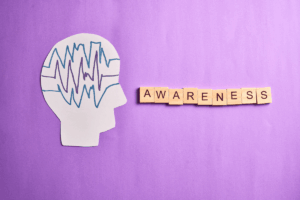
Motion sickness is a widespread issue that limits the use of transportation and affects individuals of all ages. Passengers are more susceptible to motion sickness than drivers, particularly in autonomous vehicles. However, many existing in-vehicle technologies fail to prevent motion sickness. Several studies have reported the association between vestibular function, especially otolith pathways, and motion sickness. These studies evaluated the imbalance and autonomic dysregulation using various tests such as heart rate variability (HRV) and posturography. Sounds around have been shown to modulate vestibular function and improve balance in animals and humans.
A recent study published in Environmental Health and Preventive Medicine examined whether specific sound frequencies and pressure levels can reduce motion sickness by targeting imbalance and autonomic dysfunction, aiming to improve comfort in vehicle-like motion conditions.
In the ex-vivo study, the explant culture of murine utricles of Institute of Cancer Research (ICR) mice aged 5–9-day-old was used. This tissue was tested with and without pure tones of 85 dBZ at 100 Hz or 250 Hz using a KSC-SW11 speaker. The best sound frequency (90 Hz to 1000 Hz) and pressure level l (65 dBZ to 85 dBZ) of vestibular function were evaluated in this animal study.
In a human study, participants with a history of motion sickness were recruited by posters around the campus of Nagoya University. People with hearing loss, dizziness, and vertigo were excluded. All participants were exposed to motion through swing at 30 rpm speed (0.5 Hz), driving stimulator (AVL InMotion system), and real car. All subjects were exposed to pure tones using SL-D501 or KSC-SW11 speakers. Electrocardiography (ECG), posturography, and motion sickness assessment questionnaire (MSAQ) methods were employed in a human study.
Motion sickness responses in both mice and humans were investigated after a short (5 min) exposure to a pure tone of 80-85 dBZ (60.9-65.9 dBA). All statistical analyses were performed using the statistical package for the social sciences (SPSS) version 24.0.
In an ex-vivo study, after exposure to frequencies and pressure levels, results revealed that vestibular function was activated after 5 minutes of exposure to a pure tone at 100Hz. The beam test scores were significantly (P < 0.05) higher after shaking compared to before shaking in mice without sound exposure, suggesting the onset of motion sickness. It was reported that a 5-minute exposure to a 100 Hz pure tone improved the elevated beam scores caused by shaking compared to a 5-minute exposure to 250 Hz. Additionally, scores were considerably reduced after a 5-min exposure to 100Hz pure tone (85 dBZ) with 60- and 120-minute intervals.
Human study demonstrated that the larger envelope area in posturography brought on by the shaking of swing, driving simulator, and car improved after one-min exposure to 80–85 dBZ pure tone at 100Hz before shaking. Pure tone exposure prior to shaking improved vehicle-mediated elevated scores of the MSAQ and driving simulator-mediated activation of sympathetic nerves as measured by HRV.
In conclusion, this study suggests that short-term exposure to 100Hz pure tone at 75-85 dBZ can reduce the symptoms of motion sickness by improving balance and autonomic function, with effects lasting up to 120 minutes. This study showed a promising method for practical use in preventing motion sickness across different transport settings.
Reference: Gu Y, Ohgami N, He T, et al. Just 1-min exposure to a pure tone at 100 Hz with daily exposable sound pressure levels may improve motion sickness. Environ Health Prev Med. 2025;30:22. doi:10.1265/ehpm.24-00247














